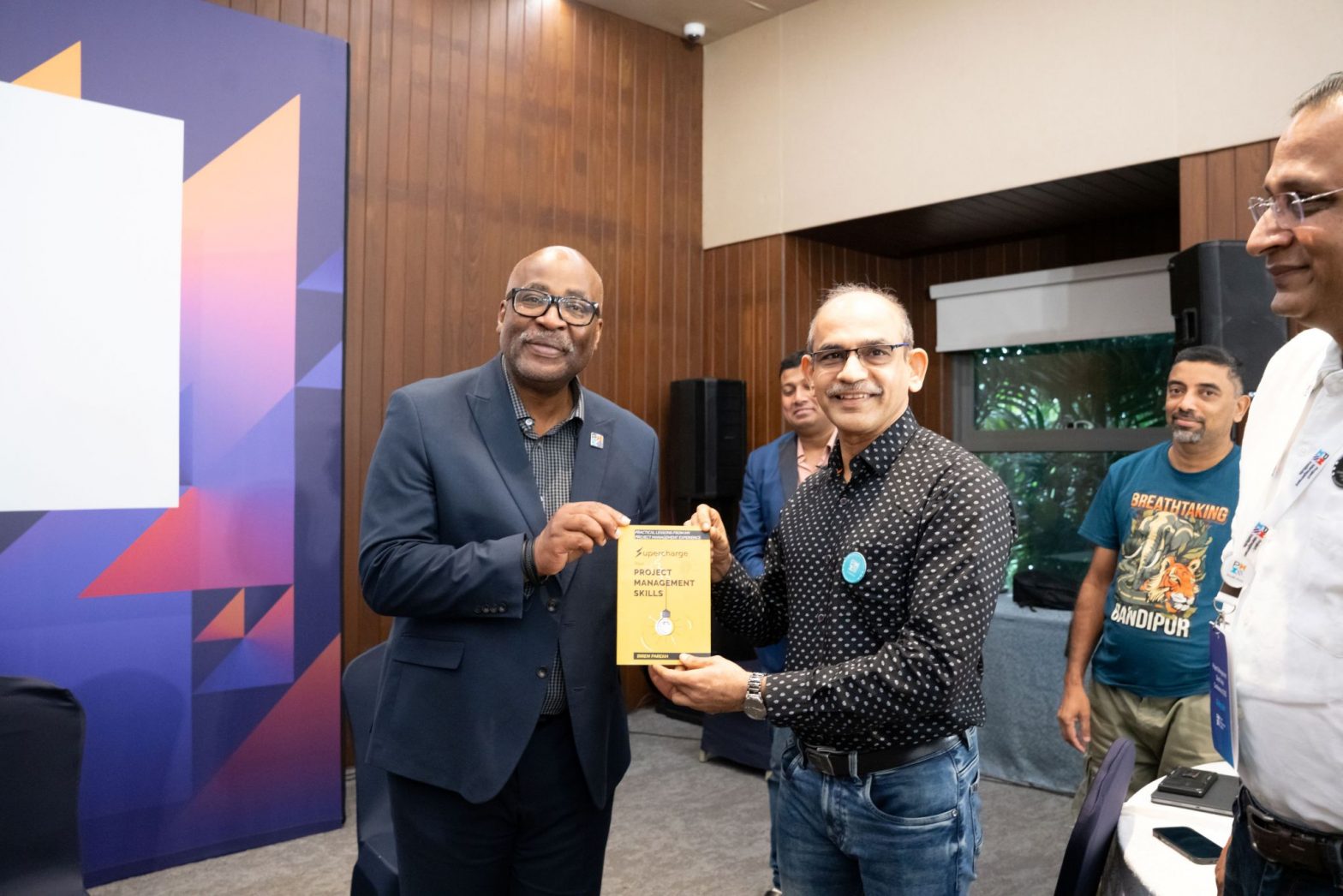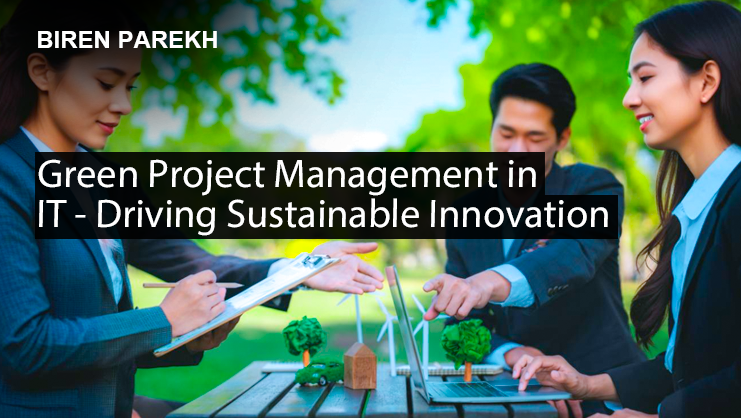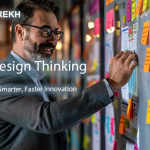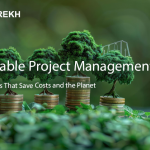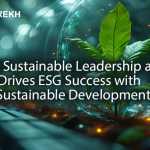A Moment of Leaders Excellence: Honored with the CEO Excellence Award
A defining milestone in my professional journey receiving the CEO Excellence Award for Client Champion at Crisil. This recognition stands as a symbol of leaders excellence, something I’ve always tried to show through my hard work, new ideas, and teamwork. To share this achievement with my outstanding colleagues and celebrate in the presence of family made it all the more special.
This special award isn’t just a title, it shows the hard work we’ve done to make our clients happy, improve the way we work, and show real leaders excellence. It also proves how important agile leadership is in today’s world. Especially in today’s dynamic business landscape. Staying nimble, responsive and proactive is at the heart of every successful team and our journey was a testament to that mindset.
Our success was built on a culture of leadership and team building, where every voice mattered and innovation was encouraged. We practiced strategic leadership to foresee client needs, pivot quickly and execute solutions with precision. These are not just buzzwords; they are the pillars that define leaders excellence and help organizations grow sustainably.
The real magic, however, happened through collaboration. Together, we practiced agile leadership by adapting strategies, empowering individuals and staying resilient through challenges. We embraced innovation leadership by thinking beyond the conventional and continuously improving every aspect of our work.
Winning in the Client Champion category underlines our ability to nurture strong relationships. This couldn’t have happened without the backing of senior leadership, who have always believed in recognizing leaders excellence and encouraging a culture of excellence across the board.
I must also mention that I just missed an award in another category and while that might seem like a near miss, it’s yet another reminder that leadership is a journey. Strategic leadership teaches us to learn from every experience, fine-tune our approach and come back stronger. That’s what leadership excellence is truly about consistency, perseverance and growth.
As a leadership management speaker, I often emphasize how vital it is to create a space where people feel empowered to contribute. That’s how leadership and team building come alive when every individual feels connected to the vision and empowered to act.
To everyone who has been a part of this journey my fantastic team, my mentors and my supportive family thank you. You’ve made this possible. I’m deeply grateful for the energy, encouragement and inspiration I receive from you every day.
If you’re seeking a leadership speaker in India who blends real-world results with practical insights, I’d be honored to share more on agile leadership, strategic leadership and how to drive leaders excellence in your organization. Let’s keep raising the bar together.
A Surreal Moment: Presenting My Book to the Chair of the PMI Board
Book Review
When I read the following message in my LinkedIn Inbox on Monday morning regarding my book, it literally made my (Mon) day 🤩 and a week. It was candid feedback 😊 from Y Gopi Rajendra about my book.
All people who have read the book have given positive feedback. That really gives me a good sense of satisfaction and accomplishment. When the book is sold with no marketing, you really feel good. The icing on the cake is when you receive such feedback, including several 5-star reviews on Amazon.
I wanted to say a special thanks 🙏to you people in my network, like Gopi, who took the time to write back to me to give candid feedback. I appreciate your time and efforts in writing me a few sentences.
All Project management professionals, aspiring and novice PMs, students, startup founders, leaders, and even team members – this book will give practical insights about how to handle daily project management and leadership in your sphere of work. I am sure you will not regret reading lessons from my decade of experience in project management.
And yes, I would also like to know what else you could have liked to see in a similar book.
My book – “Supercharge Your Project Management skills” is available on Amazon India at – https://tinyurl.com/mr46pau6, Amazon US at – https://tinyurl.com/wcb8apm8, Amazon UK at – https://tinyurl.com/ycxy99ku
With a good number of 5🌟reviews on Amazon, I am sure this book is going to help all project managers.
ChangeMaker V/s Project Manager
BE THE CHANGE YOU WANT TO SEE IN THE WORLD
A project is a synonym for change. Project management executes the vision and mission of a change into reality by a project manager. However, there is a need to shift the parochial paradigm from managing and leading the change to making and owning the change.
The next gen project manager doesn’t just manage change and wishes for change. They take ownership and accountability to make the change happen. Using their knowledge, resources, and determination, they push through the resistance and drive the change. They may not possess all the skills needed, but they know best how to use their resources within the constraints. They are the ones who connect the dots, unearth the blind spots and influence the outcomes through cogent focus and commitment. They are determined. They transform their circle of influence. They are the Changemakers.
In today’s fast-paced world, most mediocre project managers are engrossed in following processes and systems. They do not think out of the box. Without a holistic approach to optimize current structure and systems, they fail to achieve their outcomes efficiently. They are more focused on ticking all the boxes, indulging in the quick GTM strategy.
In contrast, the Changemakers, armed with their design thinking mindset, focus not only on improving the customer experience but on overcoming resistance from all corners. With their firm beliefs and passion in stride, those people-oriented Changemakers are thoughtful, compassionate, and full of empathy. Changemakers are those people with humility and integrity who not only use their skills, expertise, and authority to bring positive change, but also to set new trends. Who doesn’t know of revolutionary changemakers like Mahatma Gandhi or Dr. Martin Luther King?

The Changemakers use their collaborative nature, expertise, and authority in a way that brings positive social change and affirms the humanity of stakeholders. Changemakers have the freedom, confidence, and societal support to address any problem and drive change. Table 1 illustrates the difference between mediocre project managers and Changemakers.
Changemakers focus on lean changes at a time which can lead to a monumental transformation or WoW (Ways of Working) revolution over time. Their primary focus is the MVC (minimum viable changes), ensuring that teams stick to changes that worked and discard those that didn’t. They ensure these changes happen gradually, not suddenly, and out of nowhere. Changemakers weigh the cost of a change and prioritize changes by considering which of them would have the larger impact in a shorter time, thus implementing it in “thin slices” that work for stakeholders. They also assess how well changes work in practicality, applying that experience for future changes.
Changemakers unconsciously follow the Agile manifestos: responding to change over following a plan and harnessing it for the customer’s competitive advantage. They make the journey cherishable, relatable, and memorable for the people they work with. Changemakers rewire the brain to change the de facto response.
The Changemaker focuses on changing culture by revamping and fixing the system. They come out of their comfort zone and move towards the learning zone, ultimately breaking into the growth zone. They are the next-gen leaders; they are the ground breakers; they are the social drivers; they are the social entrepreneurs. They are reinventing WoW. They are not only the game influencer and the game player but also the game-changer. They are the Changemakers.
It’s time for project managers to upskill and upgrade themselves. Think differently, change the game, and make the change!
Conscious Leadership
Leading with Awareness: The Power of Conscious Leadership
In today’s complex and dynamic world, leadership styles are undergoing a significant shift. Traditional models focused on command and control are giving way to a more mindful approach – conscious leadership. This style emphasizes self-awareness, emotional intelligence, and fostering a collaborative environment where all voices are heard.
What is Conscious Leadership?
Conscious leadership is a practice that transcends simply giving orders and achieving results. It delves into the leader’s inner world, cultivating a deep understanding of their values, motivations, and potential biases. This self-awareness allows them to build genuine connections with others, fostering trust and psychological safety within the team.
Key Principles of Conscious Leadership:
- Self-Awareness: Conscious leaders understand their strengths, weaknesses, and emotional triggers. They are committed to continuous learning and growth, both personally and professionally.
- Emotional Intelligence: They can effectively manage their own emotions and those of others. This includes empathy, compassion, and the ability to navigate conflict constructively.
- Purpose-Driven: Conscious leaders have a clear sense of purpose that extends beyond profit margins. They inspire their teams by aligning their work with a cause that matters.
- Empowerment: They believe in the potential of their team members and empower them to take ownership, make decisions, and contribute their unique talents.
- Open Communication: Conscious leaders create a space for open and honest communication. They actively listen to diverse perspectives and encourage feedback.
- Authenticity: They lead with authenticity, being true to their values and expressing themselves openly. This fosters trust and strengthens relationships with team members.
Benefits of Conscious Leadership:
The impact of conscious leadership extends far beyond individual leaders. Organizations that embrace this approach experience a multitude of benefits:
- Increased Employee Engagement: Employees feel valued, heard, and empowered, leading to higher engagement and motivation.
- Enhanced Creativity and Innovation: A collaborative environment fosters creativity and out-of-the-box thinking.
- Improved Decision-Making: Leaders with high emotional intelligence can make more informed and well-rounded decisions.
- Stronger Company Culture: Conscious leadership creates a culture of trust, respect, and psychological safety.
- Sustainable Growth: By focusing on purpose and long-term impact, conscious leaders create organizations that are built to last.
Developing Your Conscious Leadership Skills:
The journey towards conscious leadership is a continuous process. Here are some ways to cultivate this leadership style:
- Practice Self-Reflection: Take time to reflect on your values, motivations, and leadership style. Consider journaling or meditation to gain deeper insights.
- Seek Feedback: Actively seek constructive feedback from colleagues, mentors, and even subordinates. Use this feedback to identify areas for improvement.
- Develop Emotional Intelligence: Enhance your ability to understand and manage your own emotions, as well as those of others.
- Embrace Lifelong Learning: Cultivate a growth mindset and commit to continuous learning and development. Read books on leadership, attend workshops, and seek out mentors.
- Lead with Purpose: Connect your work to a larger cause or mission that inspires you and your team.
Conscious Leadership: Leading the Way to a Better Future
In conclusion, conscious leadership is a powerful approach that benefits both individuals and organizations. By focusing on self-awareness, emotional intelligence, and fostering a collaborative environment, conscious leaders create a more fulfilling workplace and pave the way for a more sustainable and positive future. As the world continues to evolve, conscious leadership has the potential to become the cornerstone of successful organizations everywhere.
#leadership #empathy #empowerement #consciousleadership
Fintech Disruptor
One might remember banking experiences three-four decades back. When you go to the bank to update the passbook, you drop it in a basket and go back the next day to collect it. The process took so long since the banker had to reconcile entries from a huge B4 size ledger book and manually update the entries in the passbook. Gone are those days!!! The banking industry has come a long way from the 80s and 90s. Today, digital banking gives us notifications on a real-time basis with a tap on mobile or wearables – be it transactions, bank balance, or statements.
While banks have transformed themselves with innovative digital offerings, several incumbent and Neo banks have made a significant dent in traditional revenue with their innovative digital transformation initiatives. To sustain high growth and customer retention, traditional banks need to traverse the extra mile and develop hyper-personal relationships with customers turning apathy into emotional connection.
These days, a frictionless digital banking experience is inevitable to maintain or increase the market share of the banks. Omni-channel experiences, smart onboarding, microservices-based architecture, cloud-native approach, or automation – these are de facto expectations from the banks. The main reason behind these high expectations is Fintechs, raising the bar for banks in the post-pandemic world. Millennial and Gen-Z customers are now looking for an exceptional banking experience in all areas, not isolated service.
To ‘provide value for the money’ or exhibit customer-centricity, banks ought to step up their game plan by increasing their focus on innovative offerings. With over 26,000 Fintechs operating worldwide, banks have to go beyond their usual territory and provide hyper-personal curated banking experience by embracing ML, NLP, and open APIs. Not only do legacy banks need to innovate and implement, but even central authorities like RBI should become liberal and revise their policies to promote healthy competition and innovation culture across the BFSI segment. Several innovative initiatives are becoming mainstream because of Fintechs, which can be adopted by banks in a phased manner. Banks can embrace following leading-edge technology to remain ahead of the cut-throat competition.
- Enable Composable banking whereby the customer is not tied to a specific vendor, product, or technology. For an instance, Mambo provides over 4000 products from different banks, NBFC, and Fintechs on its platform.
- Augment innovation quotient like ENBD, which provides an additional interest rate based on the number of daily steps (5k or more) taken by individuals. They are also planning similar benefits for other exercises like swimming, etc.
- Enable community banking by providing Value-added services to Gig workers, LGBTQ, senior citizens, or disabled customers to cater to their specific needs.
- Implement platform banking by integrating value-added services from Fintechs or others to provide a holistic experience to maintain customer loyalty.
- Increase customer engagement through gamification to attract kids and teens to build brand loyalty early on.
- Develop AR Tool for personal finance management as done by Westpac.
- Provide AR/VR experience to the customer whereby they can visit the virtual mall for a shopping experience through All-in-one SuperApp.
- Provide 24×7 chatbots using AI and ML.
- Combine AR/VR with AI to create seamless, immersive experiences for the customer, say for virtual branch visits, thereby creating loyalty, brand building, and arresting customer attrition.
- Use alternative data for taking decisions, like predicting default risk. This can be innovatively inferred based on behaviour and personality traits captured in social media. This can help the bank speed up recovery or restrict future lending.
- Bring assurance or options to customers that the bank’s profits or part of it will be invested only in “Clean energy” to reverse the climate crisis like Swipe.
- Develop an algorithm to link likes on social media to the interest rate.
- Provide Goal-based savings options to facilitate healthy savings.
- Provide multi-lingual AI and Robo advisors, ranging from personal finance to goal-based investments.
- Boost customers’ credit scores by providing micro-loans to step up their borrowing capacity.
- Propose smart vehicle insurance which can adjust your premium amount depending on your usage, location, driving style, and discipline.
- Use of IoT in ATMs to sense queue length and provide an option to an exception in authentication based on a customer’s past transaction history.
- Use of smart contracts to allow users to take out a short-term loan using Ether as collateral.
- Bring out voice-enabled payments for visually impaired or handicapped people.
- Automate claim payment minus manual filing, in case a flight gets delayed beyond a certain agreed duration as per insurance policy .
- Use novel biometric security like iris recognition, palm vein patterns, or retinal scanning.
- Offer contact-less, gesture-based ATM transactions like the one developed by Motion Gestures.
- Embedded Rounding off to nearest pre-defined unit to create either investment pot with delta money or help achieve goals that emotionally engage them.
- Implement blockchain for immutable records and security and speed up money flows for a variety of transactions like property registrations, funds transfer, supply chain, trade finance, and payments transactions.
Few of these suggestions will certainly bring loyalty among happy and satisfied customers. This type of digital transformation will also increase employee engagement. This results in higher productivity, accurate predictions, and decision-making.
Digital transformation is full of risks and challenges. Organizational challenges, data governance, data privacy, cultural mindset, compliance risks, regulatory risks, or lack of skilled resources can become roadblock but it can be addressed in innovative ways. But this puts brakes on the delivery and execution of the initiatives. However, for the larger benefit of shareholders and investors, banks need to show the same agility as Fintechs to survive and grow.
As Darwin’s law of Survival of the Fittest suggests, only Agile and customer-centric futuristic banks will flourish and fare well in the future; rest will get acquired.
Green Project Management Building Sustainable and Future Ready Projects
The way we manage projects is evolving. Today, delivering on time and within budget is no longer enough because every project leaves a footprint. The question is: what kind of footprint are we leaving behind?
This is where Green Project Management (GPM) comes in. More than a methodology, it’s a mindset that balances performance with responsibility, ensuring the work we do today doesn’t compromise the future.
With the realities of climate change, regulatory pressure, and conscious stakeholders, sustainable project management is no longer optional, it’s essential. In this blog, I’ll explain what GPM is, why it matters, the role of a Sustainability Management Plan, and my personal journey with the GPM-b® certification.
What is Green Project Management (GPM)?
Green Project Management integrates sustainability principles into traditional project management. Projects are evaluated not only on scope, budget, and schedule but also on environmental, social, and governance (ESG) impact.
Think of it this way: GPM helps answer two questions
- Are we delivering the project successfully?
- Are we delivering it responsibly?
GPM-b® certification equips professionals with tools and techniques to embed sustainability at every project stage, ensuring that outcomes benefit people, planet, and profit.\
Importance of Green Project Management
Green Project Management is more than a professional skill it’s a necessity for modern organizations. Here’s why:
- Future-Proofing Organizations – Align projects with evolving environmental regulations and sustainability standards.
- Building Stakeholder Trust – Show commitment to ESG principles and ethical business practices.
- Long-Term Value Creation – Reduce waste, minimize resource consumption, and generate lasting benefits.
- Empowering Project Managers – Shift from delivery-focused roles to change agents driving meaningful impact.
My Journey with GPM-b® Certification

Recently, I earned my GPM-b® (Green Project Management – level b) certification, and it reshaped my perspective on project management.
On LinkedIn, I shared:
“Project Management is no longer just about timelines and deliverables. It’s about creating a positive, lasting impact. The GPM-b® certification has helped me see the bigger picture of how projects connect to sustainability, business ethics, and the well-being of future generations.”
This achievement isn’t just a badge it represents a commitment to integrating sustainability into every project I manage.
Sustainability Management Plan (SMP)
A key element of Green Project Management is the Sustainability Management Plan (SMP).
An SMP is essentially a blueprint for embedding sustainability into projects. Just as a project plan lays out tasks and milestones, an SMP ensures that environmental, social, and ethical considerations are included from start to finish.
It answers questions like:
- How can we reduce waste, energy use, and resource consumption?
- How will the project positively impact society or the community?
- Are there ways to prevent negative environmental or social consequences?
The SMP guides:
- Planning: Incorporate sustainability goals at project initiation.
- Execution: Monitor environmental and social impacts while delivering outcomes.
- Closure: Evaluate sustainability results and capture lessons for future projects.
With an SMP in place, sustainability becomes integral to project strategy, not an afterthought. Every decision, milestone, and deliverable is measured against sustainability objectives.
The Role of Project Managers in Driving Change
Project managers are no longer just delivery agents. With GPM, they become change agents and impact creators. Every project leaves a footprint. The question is: Do we leave behind carbon footprints or meaningful ones?
Green Project Management equips leaders to ensure that project outcomes benefit not only the organization but also society and the environment.
Benefits of Green Project Management
Implementing GPM and an SMP offers tangible benefits:
- Reduced environmental footprint and waste
- Alignment with ESG standards
- Improved stakeholder trust and reputation
- Long-term cost savings and operational efficiency
- Personal growth for project managers as responsible leaders
Real-World Applications of Green Project Management
GPM principles apply across industries:
- Construction Projects: Using energy-efficient materials, reducing waste, and sustainable site practices.
- IT and Technology: Minimizing e-waste, adopting greener hosting, and designing accessible solutions.
- Product Development: Designing recyclable products, using responsible supply chains, and reducing resource consumption.
- Corporate Programs: Aligning portfolios and programs with the UN Sustainable Development Goals (SDGs).
Each example demonstrates that sustainability can be woven into every aspect of project delivery.
The Future of Project Management is Green
The world is changing fast, and businesses that ignore sustainability risk falling behind. Green Project Management is not a trend, it’s the future.
By embedding sustainability into projects, organizations build resilience, trust, and long-term value. For project managers, it’s an opportunity to make a real difference in the way work is done.
Conclusion
Green Project Management is more than a methodology, it’s a commitment. With certifications like GPM-b® and tools like the Sustainability Management Plan, we can lead projects that achieve business goals while leaving a positive, lasting impact on the world.
Every project we manage is a chance to choose the footprints we leave behind. With GPM, we can make sure they are meaningful.
FAQ:
Q1: What is Green Project Management?
A: Green Project Management integrates sustainability principles into every phase of project delivery, balancing cost, time, scope, and ESG impact.
Q2: Why is GPM important?
A: It helps organizations future-proof projects, build trust, create long-term value, and reduce negative environmental and social impact.
Q3: What is a Sustainability Management Plan (SMP)?
A: An SMP is a blueprint that embeds sustainability into planning, execution, and closure of projects, ensuring every decision considers environmental and social factors.
Q4: How can organizations adopt GPM?
A: Through certifications like GPM-b®, developing SMPs, aligning projects with ESG standards, and training project managers to act as sustainability leaders.
Green Project Management in IT – Driving Sustainable Innovation
The IT industry is a powerhouse of innovation, but it’s also a significant contributor to global carbon emissions. From massive data centers to power-hungry software, the environmental footprint of technology is growing. According to research, the ICT sector now accounts for 1.7%+ of global GHG emissions, rivaling the aviation industry.
This makes Green Project Management (Green PM) an essential approach for the future. By embedding sustainability into every stage of IT project management, organizations can reduce costs, comply with ESG standards, and align with the Project Management Institute’s (PMI) sustainability vision.
What is Green Project Management?
Green project management is the process of applying proven project management methods while prioritizing environmental sustainability. Unlike traditional approaches that focus solely on scope, cost, and time, Green PM adds environmental and social impact as a success metric.
One of the leading frameworks, GPM P5, assesses projects on:
- People
- Planet
- Prosperity
- Process
- Product
This aligns projects with UN Sustainable Development Goals (SDGs) and ensures IT initiatives deliver lasting value for business and society.
Benefits of Green PM in IT include:
- Lower operational costs through efficiency gains.
- Compliance with ESG regulations.
- Enhanced brand reputation.
- Measurable carbon footprint reduction.
Why Green PM Matters for IT Projects
The urgency is clear:
- Data centers already consume 4.4% of U.S. electricity (2023), projected to hit 12% by 2028.
- E-waste reached 53.6 million metric tons globally in 2019.
- IT energy costs have grown 50% faster than revenue in many sectors.
Green PM addresses these challenges by:
- Reducing energy per compute unit.
- Extending hardware lifecycles.
- Transitioning workloads to renewable-powered infrastructure.
- Embedding sustainability KPIs in project charters.
What is Green Coding?
Green coding is a key pillar of Green PM in IT. It involves writing software that minimizes resource usage and energy consumption.
Core green coding practices:
- Optimizing algorithms to lower computational complexity.
- Reducing unnecessary network requests.
- Using efficient data formats.
- Scheduling heavy workloads during renewable energy peaks.
- Avoiding “feature bloat” that increases processing demand without adding value.
In simple terms, what is green coding?
It’s coding for performance, efficiency, and sustainability, creating software that runs leaner and greener.
Frameworks & Standards for Green PM
To ensure credibility and measurable impact, organizations can adopt:
- GPM P5 Standard – Evaluates sustainability impact across five key dimensions.
- PMI PMBOK7 + ESG – PMI’s integration of environmental, social, and governance principles.
- ISO 14001 & ISO 50001 – Global environmental and energy management standards.
- Green Software Foundation (GSF) – Sets tools like the Software Carbon Intensity (SCI) standard.
- UN SDGs – Links IT projects to global sustainability targets.
Green PM Case Studies in IT
Infosys – Achieved carbon neutrality 30 years ahead of schedule by cutting electricity use per capita by over 50%, adopting renewables, and offsetting emissions.
Tech Mahindra – Reduced Scope 1 emissions by 76% through efficient infrastructure, renewable energy, and reduced travel.
Google Data Centers – Operate at near-theoretical best power usage efficiency (PUE ≈ 1.10) and have matched 100% of electricity with renewables since 2017.
Common Pitfalls to Avoid
- Greenwashing – Making sustainability claims without measurable proof.
- Ignoring Scope 3 Emissions – Overlooking supply chain and lifecycle impact.
- Unintended Consequences – For example, AI models or crypto mining projects that consume huge amounts of energy.
How Different Roles Drive Green PM
- Executives – Set green KPIs and allocate funding.
- Project Managers – Embed eco-goals into project scope and quality metrics.
- Developers – Apply green coding techniques.
- DevOps/IT Ops – Optimize server use and shut down idle environments.
- QA Engineers – Include energy efficiency in test plans.
- Business Analysts – Incorporate sustainability into requirements gathering.
Green PM Implementation Roadmap
- Assess & Baseline – Measure current ICT footprint.
- Define Goals & KPIs – Set measurable sustainability targets.
- Embed in Processes – Integrate eco-checks in all project stages.
- Implement Initiatives – Upgrade infrastructure, refactor code, use renewables.
- Monitor & Report – Track progress with dashboards.
- Iterate & Scale – Apply best practices across the portfolio.
The Role of the Project Management Institute (PMI)
The Project Management Institute is a global leader in promoting sustainability in projects. Through training, certifications, and events, PMI empowers project managers to execute projects in a sustainable manner called Green Project Management. Many project management speakers at PMI events now emphasize that sustainability is not just ethical, but also profitable.
FAQs
Q1: What is Green Project Management?
It’s the integration of environmental sustainability into project management, ensuring projects deliver both business value and positive environmental impact.
Q2: What is green coding?
Green coding refers to writing software in a manner that minimizes energy consumption and reduces carbon emissions.
Q3: Does Green PM cost more?
Not over time, most companies see long-term cost savings and improved compliance.
Q4: How do I start with Green PM?
Begin with baseline assessments, define eco KPIs, and embed them into your project lifecycle.
Q5: Is Green PM relevant to all IT projects?
Yes. From software development to cloud migration, every IT project can benefit from sustainability measures.
Conclusion
Green PM is no longer a “nice-to-have”, it’s a business necessity. By combining green project management principles with green coding practices, IT leaders can create solutions that are efficient, profitable, and environmentally responsible. Aligning with PMI’s sustainability frameworks and global SDGs ensures that the technology we build today leaves a positive impact on future generations.
Innovation Jam
CRISIL Limited is a leading, agile and innovative global analytics company driven by its mission to make markets function better.
CRISIL Limited provides an excellent opportunity for all CRISIL employees to contribute ideas and became part of the strategic planning process and shape the future of the company. It stems from a desire to encourage co-creation, innovation, and entrepreneurial thinking. It provides an excellent platform for CRISIL-ites to showcase their ideas.
I am glad to share that they have selected my idea as one of the top 4 ideas for execution with the required funding. Thanks to the CRISIL management team for the recognition and prize. Looking forward to developing MVP in the coming days..
#innovation #management #future #agile #analytics #funding #planning #share #opportunity #team #markets
ISB Bombay – Risk Management Session
🛠 Project management is an essential skill that can help students with a wide range of situations and develop a variety of useful 📈 skills.
Project management skills encompass 🔎 a wide variety of management skills, including time management, scheduling, budgeting, and resource management. Being able to manage these aspects successfully can help students’ complete projects faster 🎯 and more easily while producing higher-quality

output.
Successful project management skills are difficult to learn, but lead to a significant advantage when implemented properly. Learning project management can help students excel in their academic and career.
It’s good to see that a lot of business schools and colleges 🏫 are having project management as a subject. And it is very much the need of the decade.
📢 It was my pleasure to conduct the session on “Risk Management” and “Project Status Reviews” for students of IBS Mumbai over the weekend.
IBS Mumbai has a unique and innovative approach to business education, that focuses on providing the right knowledge, 100% case-based learning, imparting the right skills for enduring success in management careers, and shaping the right attitudes to transform its students into the leaders of the future.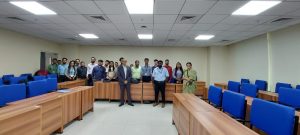
Thanks to Dr.Roopali Srivastava for the invitation.
#pmi #projectmanagementinstitute #projectmanagement #bschool #riskmanagement #projectreport #project #leader #speaker #thoughtleader #projectmanager #projectleader #pminstitute #pmicertification #pmiproudmember #pmp

